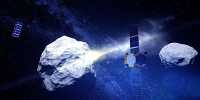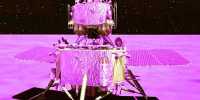On April 29, China launched the first module for its planned Tiangong space station and successfully turned the core into orbit. However, the rocket it took was not so lucky – a large part of the Long March 5B rocket is now in failed orbit and could re-enter the Earth uncontrollably to land at an unknown location.
Non-reusable rocket stages usually return to Earth separately before reaching orbit via a specific path, with touchdowns occurring at specific locations (often towards the ocean) with rocket stages should reach orbit, they often carry out a technique called deorbit burn that takes the stage back into the atmosphere. The large core of the Long March 5b entered low orbit, but it fell 80 kilometers (50 miles) toward Earth.

There are now concerns that the stage could survive the re-installation and land in a populated area, much like the wreckage of the previous year’s Long March 5B rocket, which damaged a village in Cote d’Ivoire in May last year. “The last time they launched a Long March 5B rocket they ended up with long rods in the sky and damaged several buildings in Ivory Coast,” said Jonathan McDowell, an astrophysicist at Harvard University and a popular site commentator on Twitter. “Most of it burned, but there were lots of metal pieces that fell to the ground. We are very lucky that no one was injured.”
McDowell, however, notes that this is not a potential catastrophe, although the stage is not in the same league as the meteor, depending on the danger wherever it lands. “So we’re not talking about large-scale genocide here, but there’s some possibility of property damage and one or more people being injured,” he said. And no problem, we will see and I am closely monitoring.”
Although no official announcement has been made about the strategies planned by the Chinese National Aerospace Administration, the South China Morning Post reports that Chinese authorities are monitoring the forecast and predict that most of it will burn up in return and not fall into international waters. Most likely the scene is that the wreckage landed in the sea, innocently touching the surrounding areas without any damage. According to Space.com, the ruins of exhausted places where a person is about to fall are one of the trillions.
In the next few days, scientists will be able to determine how close the wreck has come, but so far not much information has been provided. China plans 11 launches by 2022, which will gradually integrate its new space station. All of this will probably use the same Long March 5B rocket, which now has two failed core reentries, so there is speculation about how to fix the problem.















